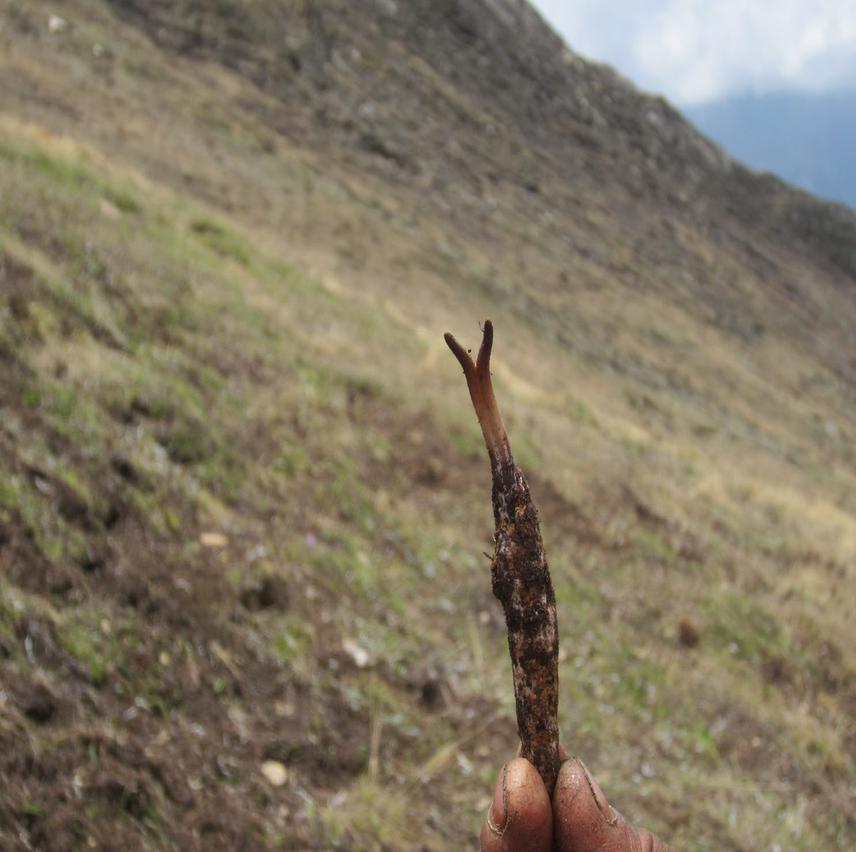Suraj Upadhaya
Other projects
4 Jul 2016
Sustaining Ophiocordyceps sinensis and Community's Livelihoods: Understanding the Economic & Ecological Impacts of Cordyceps Harvesting in High Mountain, Nepal
22 Jun 2023
Conflict in the Paradise: Balancing Conservation and Cordyceps-Based Livelihoods in the Himalayas
Cordyceps (Ophiocordyceps sinensis – an ascomycete fungus parasitic on caterpillars) is traded in large volumes in international markets contributing significantly in the national economy. But due to the recent surge in demands, its market price has surpassed all other natural medicinal products. In turn, this high return has encouraged rampant harvesting. Proactive conservation measures that directly involve local stakeholders, e.g. community forest users’ groups, buffer zone management community, local women’s groups, are greatly needed to manage Cordyceps harvesting as well as conserving fragile habitats. For the sustainable livelihoods and high-altitude ecosystems, we aim to understand challenges in conservation and sustainable trade of Cordyceps in Nepal. In addition to this we will educate local communities and other stakeholders.

Freshly picked Cordyceps.
Harvesting of Cordyceps (Ophiocordyceps sinensis) by the Himalayan communities is widespread across the Himalayan region, including Nepal. Cordyceps is traded in large volumes in domestic as well as international markets, supplementing household income, as well as being a source of sustainable livelihoods (Upadhaya, 2018; Yadav et al., 2011). But due to the recent surge in demands, its price in the international market has surpassed all other natural medicinal products (Shrestha and Bawa, 2013), and due to the high price harvesters and traders received the high return (Shrestha and Bawa,2014). At the same time, high returns have encouraged unsustainable and rampant harvesting practices causing threats to long term survival of Cordyceps due to habitat destruction of it, which also supports rare, endangered, and threatened species found in the Himalayas. Because of the importance of Cordyceps and its habitat to other endangered species, and the threats these habitats face, research and conservation efforts are crucial for sustainable trade of Cordyceps along with conservation of its habitat. Unsustainable and rampant harvesting practices are causing threats to long term survival of Cordyceps along with the destruction of its habitat, which supports many rare, endangered, and threatened high-altitude species such as Snow leopard, Tibetan wolf, Blue sheep, etc. Previous work suggested that the Cordyceps population and per-capita harvest is decreasing, threatening the livelihoods of local people (Upadhaya, 2018). Proactive conservation measures that directly involve local stakeholders, e.g. community forest users’ groups, buffer zone management community, local women’s groups, are greatly needed to manage Cordyceps harvesting as well as conserving fragile habitats.
The current management plan for the Dolpa district has neglected important aspects of the trade and sustainable conservation of Cordyceps and its habitat. This project will fill these gaps and allow conservation practitioners to make evidence-based decisions to mitigate threats to Cordyceps and fragile habitats. Therefore, this study aims to understand the motivations and perceptions of harvesters and traders about the challenges of conservation of Cordyceps and its habitat. We will use Q methodology which is a pile sorting method to achieve our objectives. This method systematically explores and analyses different perspectives on a particular topic, based on similarities and differences in how much people agree or disagree with statements about a topic (Watts and Stenner, 2012).